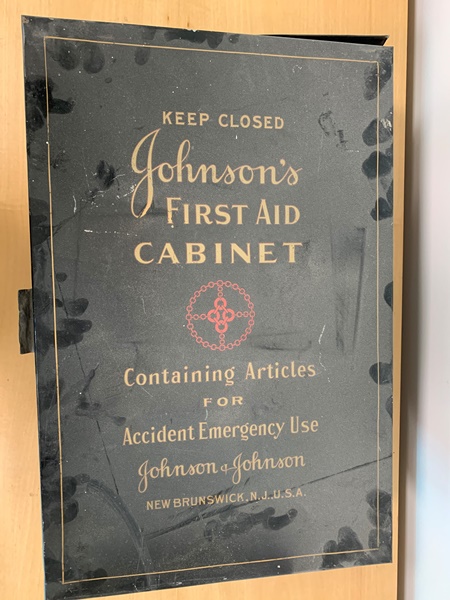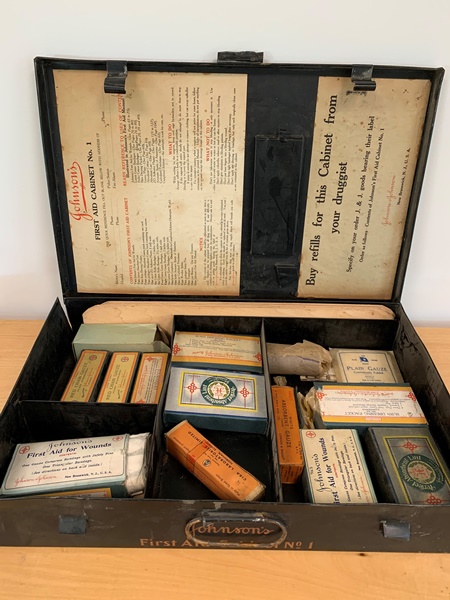
Vintage first aid kit
Our Dunedin team made an interesting discovery at the back of a cupboard last week – a Johnson & Johnson’s First Aid Cabinet No. 1.
It appears to date back to the 1920’s, and is complete with most of its contents.
The first aid kits and first aid manuals were invented by Johnson & Johnson in the late 19th century to treat railroad workers’ injuries.
Not all of the first aid advice listed on the case has stood the test of time…
WHAT TO DO
- While waiting for the surgeon, keep cool, urge bystanders not to crowd.
- Arrange sufferer’s body in a comfortable position.
- If the surgeon will arrive shortly do not attempt to do more than stop bleeding or to cover the injured part.
- If the injury is serious do not attempt to remove clothing, but cut away sufficient to care for the injury.
- For extensive injuries, when a surgeon will not arrive for some hours, follow instructions in the printed Manual.
- Under all circumstances, do not put anything on the wound except dressings found in this cabinet.
WHAT NOT TO DO
- Don’t use lukewarm water to stop bleeding–it only increases it. Use either ice, ice-cold water or water as hot as can be borne.
- Don’t apply cobwebs, tobacco, mud or other styptics to stop bleeding.
- Don’t give stimulants to bleeding patients.
- Don’t put bare fingers into a bleeding wound.
- Don’t keep tight bandages applied longer than necessary.
- Don’t apply any dressing or bandage, but only such surgically clean ones as are contained in this cabinet.







